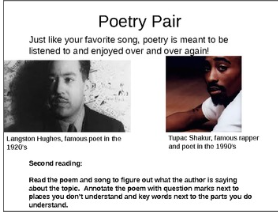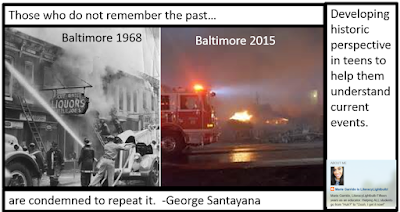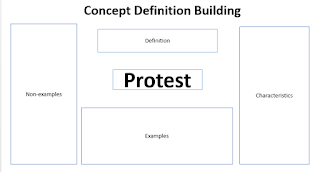Up Close and Personal!
Your students are telling you how to reach them. Are you listening?
A Rookie Mistake...
Sure, I listened to my students, but I didn't really hear them...
At the beginning of my teaching career, I remember finally getting into my groove as an educator---except that one class. You know the one. That class who complains about having to do an activity that all of the other classes loved. That class who resists doing what the other classes beg you to do. That class that just does not go as smoothly as the rest. For me that class was my 6th period and it stood out in stark contrast to my 5th period class that always went so well. In fact, one day, out of exasperation from the resistance I was getting I exclaimed to them, "What is wrong with you guys!?! Fifth period loved this activity!"
Their answer was simple, "We aren't fifth period." I don't remember what I replied in return, and I wish that I can say that this is when the light bulb turned on for me and I used it as a teachable moment to talk to my 6th period and see them as individuals, to get to know that makes them tick, to respond to their needs, to design their lessons with those needs in mind. Sadly, although I am a quick learner in most areas, that would not come yet.
Slowly and Surely...
For me the answer unfolded more slowly, in serendipitous ways across different classes with different students. One memorable interaction was with a student who was a selective mute. Due to family difficulties, he withdrew into himself and refused to speak--for several months. One day I told him how reading was always my escape and safe--whenever things around me were hectic, I could turn to the trusty characters of my favorite books. A few days later I noticed that he started the Series of Unfortunate Events books, so I purchased the next book for the class library, putting it where he would notice it the next day. He found the book, and the next and next---it was our way of communicating. To help bring him out further, after noticing that he liked to draw, I bought him a sketchbook/journal. He loved it, so much so that he told me, "Thank you!" Yes, he spoke, out loud and continued to speak, quietly at first and only to me, but eventually he came out of his shell. Years later I would see him again as a young man--at the bookstore of course! I overheard him telling his friend, "That is the teacher that got me to love reading!"
There was also the time that an energetic group of 6th graders couldn't stop tapping on their desks. After learning that they loved music, I taught the next unit, poetry, though songs and we even had a ton of fun beating our pencils in unison to the rhythm of the different classic poems.
Another class of struggling 8th graders, many of whom were reading at the 1st through 3rd reading level just didn't feel successful in school at all. I found out from them that they did feel successful in other areas of their life--just not school. That was when I instituted our first class Talent Show, on the last day of the quarter usually reserved for makeup work or reflecting on the quarter. They all saw each other in a different light---they were able to be seen as successful in a school setting. Several of those students ended up auditioning and making it at the school wide Talent Show at the end of the year!
I finally got it---to truly teach every student, you need to reach each one--wherever their interests and needs are, and connect them to the instruction that I do with them on a daily basis.
Practicing What I Preach...
Now, as a staff developer, I facilitate teacher trainings. Each time I do a training it is different. The objectives and content remain the same, but my examples, the turns of the discussion, and the timing of the activities are all shaped by the individuals in the training room that day. One of the first --and most important questions I ask is, "What do you want to get out of this workshop today?" and as I review the objectives and agenda I make sure to weave in their needs and interests. Essentially the learning experience is personalized for the learners in the room that day.
Lesson Learned: To truly make the learning personalized, you must get up close, up from the teacher's desk, out from behind the podium, away from the lesson plan as it was written, and get up close and personal with your learners.
What have been your most memorable mistakes in the classroom that you learned from?



































